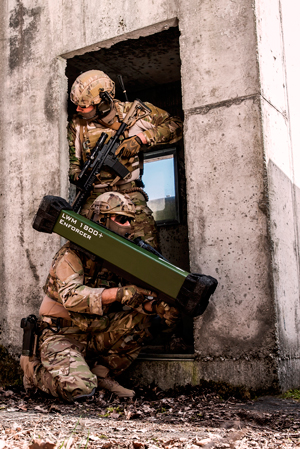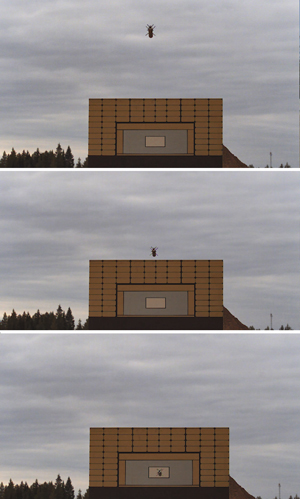In terms of maximising levels in lethality, SOF continue to identify small arms and support weapon solutions capable of being used across a variety of environments and mission sets.
Critical areas of interest when examining new weapons include enhanced mobility throughout confined urban environments as well as sufficient anti-armour capabilities associated with the Great Power Competition (GPC) and ‘stopping power’ to neutralise threats wearing Suicide Vest Improvised Explosive Devices (SVIEDs) similar to Al-Baghdadi.
Malaysian SOF
On 21 November, Malaysian SOF published a solicitation calling for multiple small arms solutions which would be used to support Close Quarter Battle (CQB) missions associated with counter-terrorism, hostage rescue operations and urban warfare.
Due to be fielded by the Malaysian Army’s Grup Gerak Khas (Special Services Group), requirements range from the acquisition of 9mmx19mm handguns and submachine guns through to Picatinny-standard Rail Adaptor Systems capable of being integrated on board 5.56mmx45mm M4 carbines which would allow operators to attach a series of accessories including laser designators, torches and optical weapon sights.
Malaysian SOF requirements remain largely representative of the wider international SOF community which appears likely to stick with NATO standard 9mm, 5.56mm and 7.62mm calibre solutions due to interoperability with US armed forces as well as reduced logistics costs.
SOF Small Arms Market
However, some of the most innovative trends in the SOF small arms market continue to be explored by United States Special Operations Command (USSOCOM) which continues to consider alternative ammunition types including 6.5mm Creedmoor.
Additional examples include Naval Special Warfare (NSW) which is in the midst of conducting a combat evaluation of SIG Sauer’s Personal Defense Weapon (PDW) which comprises a conversion kit capable of upgrading legacy 5.56mmx45mm M4A1 CQB carbines into 7.62mmx35mm (.300 Blackout) weapon systems.
Having deployed an undisclosed number of PDW conversion kits in June 2019 to multiple theatres around the world, NSW’s combat evaluation is due to be completed in May 2020 ahead of consideration for a wider procurement to equip US Army, Air Force and Marine SOF component commands.
As SIG Sauer explained to Armada International, PDW conversion kits (which comprise a replacement upper receiver) not only provide greater range and lethality for operators but also reduced size and weight for operators seeking to enhance their manoeuvrability in confined spaces. Upgraded M4A1 CQB PDW variants measure less than 66cm in total length and less than 2.5kg in weight.
Satisfying requirements for a lighter weight machine gun, USSOCOM has also signed a contract with SIG Sauer for the delivery of an undisclosed number of lightweight machine guns (LMG), ammunition and ‘next-generation’ suppressors in .338-calibre Norma Magnum (NM).
The contract, worth an undisclosed sum, follows the successful conclusion of safety certification by USSOCOM of SIG Sauer’s MG 338 model.
SIG Sauer’s MG 338 model
“SIG Sauer has completed deliveries of multiple systems, comprised of MG 338 machine guns, 338 Norma Mag ammunition, and next generation suppressors. For the first time in decades, the US military has certified a new machine gun, ammunition, and suppressor at the same time, bringing new innovation, portability, and increased lethality to our ground forces,” explained Ron Cohen, president and CEO of the company.

As Cohen explained to Armada, the SIG MG 338 provides a ‘bridge’ between legacy 7.62mmx51mm M240 machine guns and .50-cal M2 heavy machine guns.
“The SIG MG 338 is noticeably lighter [than the M240], weighing only 20 pounds (9kg), and provides significantly more range and lethality and offers a man-portable solution with similar effective-range. Making this system even more desirable is the new SIG Sauer next generation suppressor which drastically reduces the impact of harmful toxic fumes and signature, making the operator less vulnerable,” a company statement read.
The SIG MG 338 includes a short-stroke gas piston operating system with recoil mitigation system, free-floating, quick-change barrel, ambidextrous controls including charging handle, switchable feed tray. The machine gun can also be converted to 7.62mmx51mm calibre, depending upon end user preference.
Comprising a belt-fed system, the SIG MG 338 satisfies USSOCOM’s requirement for a Light Weight Medium Machine Gun (LWMMG). Also considered in the competition was General Dynamics Ordnance and Tactical Systems’s LWMMG, also in .338-calibre.
Multi-Environment Ammunition
USSOCOM’s NSW is also exploring concepts in ammunition including rounds which can be fired while under water. Companies including DSG Technologies are supporting explorative efforts with its supercavitating CAV-X ammunition, comprising tungsten-tipped rounds which can be fired through and into water.
Designed to satisfy the operational requirements of combat divers, ammunition could be used by underwater reconnaissance and/or demolitions teams to engage enemy combatants from covered positions while under the water, thereby allowing operators to maintain the element of surprise by negating any requirement to breach the surface.
“Depending on the weapon and the used loading variant, this ammunition is suitable for use in partial or fully submerged weapons, regardless of if the target is in water or on the surface. Due to the unconventional shape and significant mass, this round offers great armour piercing capability against multi-layer structures. This shape is also very effective against targets with fibre structure or mud, even when covered by sand,” DSG Technologies company literature explained.
DSG Technologies’ CAV-X ammunition, also referred to as Multi-Environment Ammunition (MEA), has been designed in two variants, comprising A2 and X2 models. Both MEA types have been in evaluation with USSOCOM since November, defence sources confirmed to Armada International.
The A2 is designed to be fired into the water from the surface or air, thereby allowing SOF operators on board rigid hull inflatable boats (RHIBs) for example, to engage enemy combat divers or swimmer delivery vehicles (SDVs).
Meanwhile, the X2 has been designed to be fired by combat divers already underwater, allowing them to neutralise enemy sentries while maintaining the clandestine nature of an operation, defence sources suggested to Armada International.
Anti-Armour Systems
Considering the precision anti-tank capabilities of SOF organisations seeking to operate across the GPC, small unit teams must also be equipped with next-generation capabilities in terms of anti-armour systems.

Examples include MBDA’s Enforcer which on 20 December was selected by the German Federal Office of Bundeswehr Equipment, Information Technology and In-Service Support (BAAINBw) to satisfy’s the German Army Special Forces Command’s (KSK’s) ‘Leichtes Wirkmittel 1800+’ shoulder-launched unguided munition requirement.
KSK has been seeking a “lightweight, day/night, precision-guided, shoulder-launched weapon system with an effective range of more than 1,800m,” an MBDA spokesperson explained.
MBDA Germany’s managing director and executive group director for strategy, Thomas Gottschild, explained how the “German customer had chosen the Enforcer after a detailed, competitive evaluation for the ‘Leichtes Wirkmittel 1800+’ requirement”.
“Enforcer provides low-collateral precision effects capabilities against the threat from lightly armoured static and moving targets, targets behind cover, and against targets at long range also in urban environments,” company officials added.
“MBDA is now set to complete qualification and prepare for series production. The modular design of the Enforcer system enables a range of future development options, including a prospective ‘family’ of Enforcer munitions for land, air and sea applications,” officials concluded.
Carl Gustav Guided (CGG) munition

launched Guided Carl Gustaf Munition, featuring a semi-active laser guidance system.
Elsewhere, Saab and Raytheon continue to develop the Carl Gustav Guided (CGG) munition in line with emerging operational requirements from USSOCOM. In October, a series of guided flight tests were conducted in Karlskoga, Sweden as well as Mile High Range, Texas, demonstrating how a semi-active, laser-guided munition will allow militaries to accurately engage stationary or moving targets at distances up to 2,000m in range.
“Raytheon and Saab have spent the last 12 months working together to develop a precision-guided munition that will penetrate multiple targets, such as light armour, bunkers and concrete structures, at extended ranges,” explained Sam Deneke, Raytheon Land Warfare Systems vice president.
“This lightweight round can overmatch potential adversaries while decreasing collateral damage, making it an ideal weapon when fighting under restricted rules of engagement.”
Raytheon and Saab are due to test an all-up round in 2020.
by Andrew White













